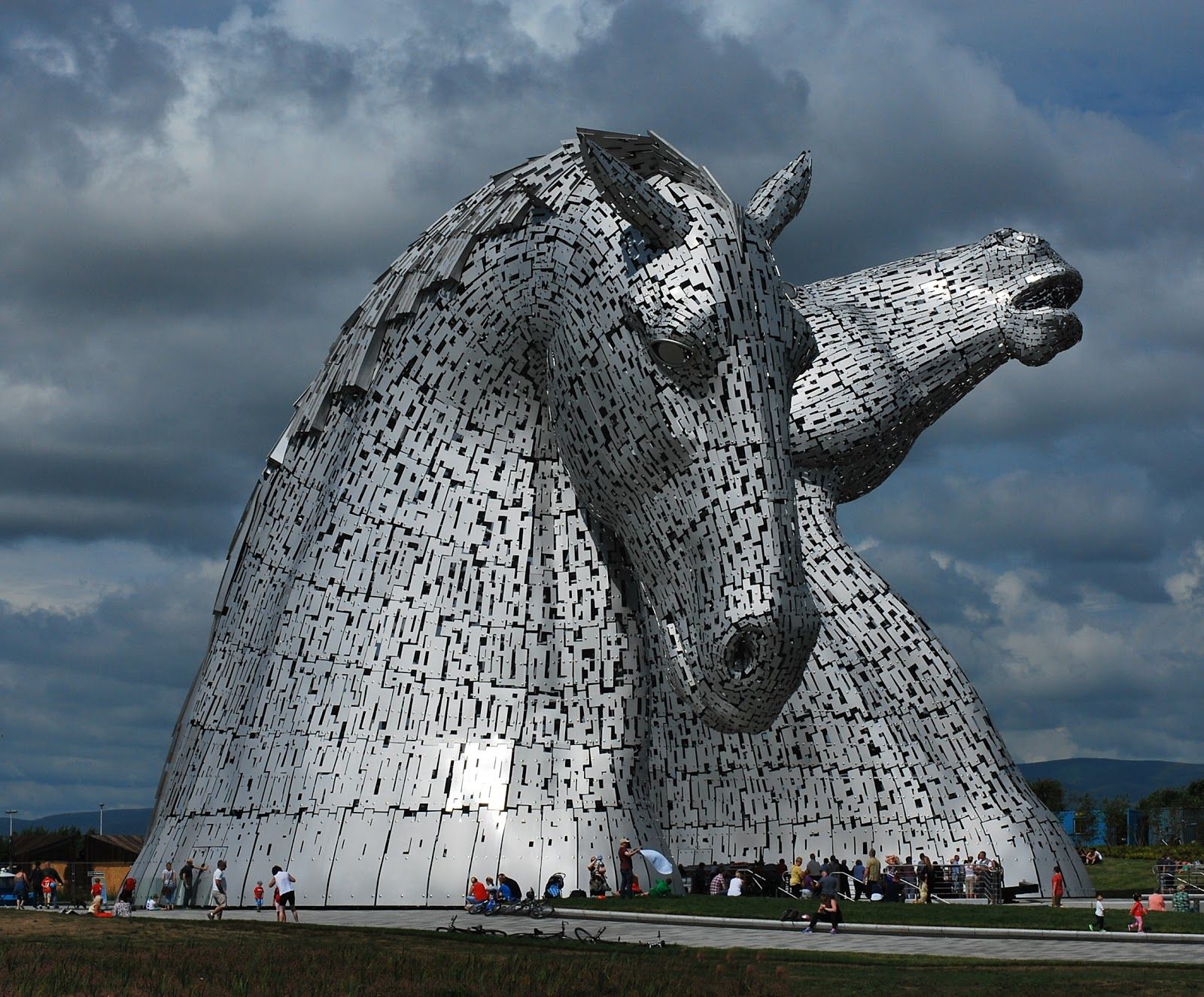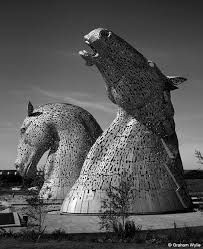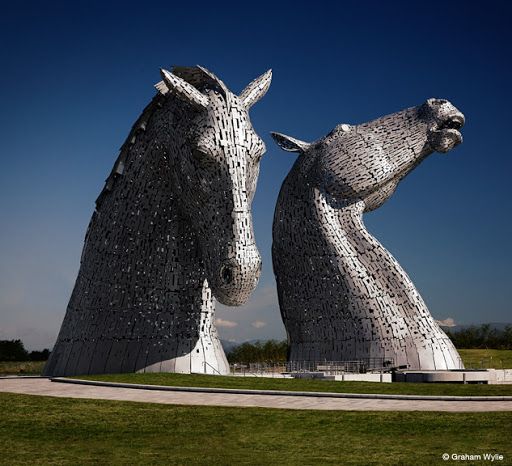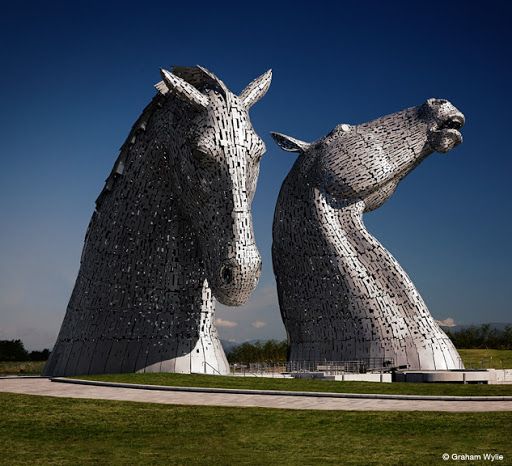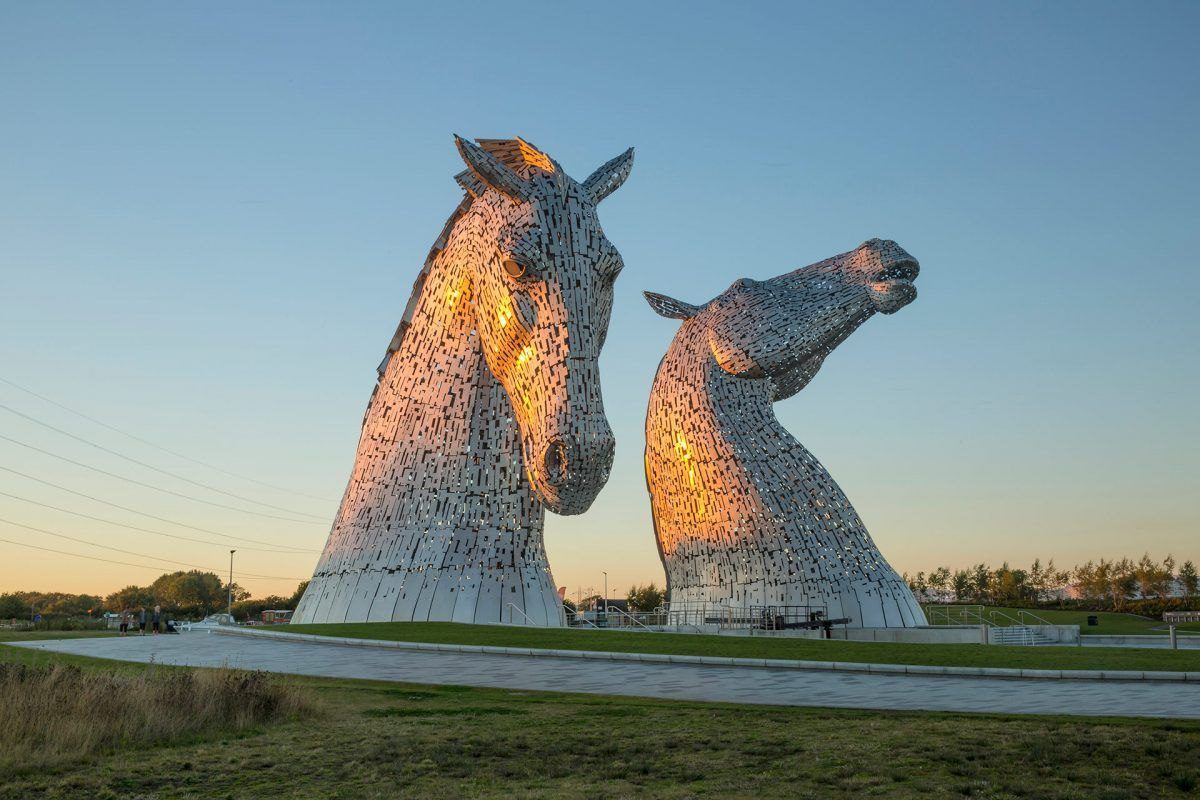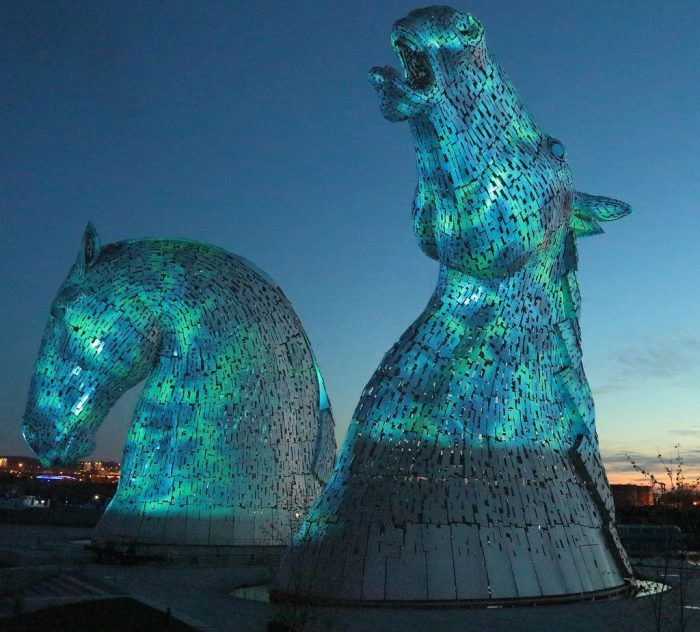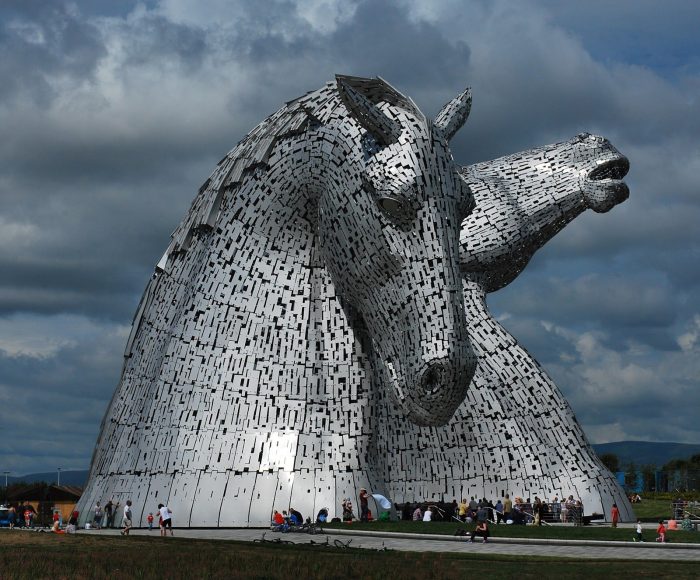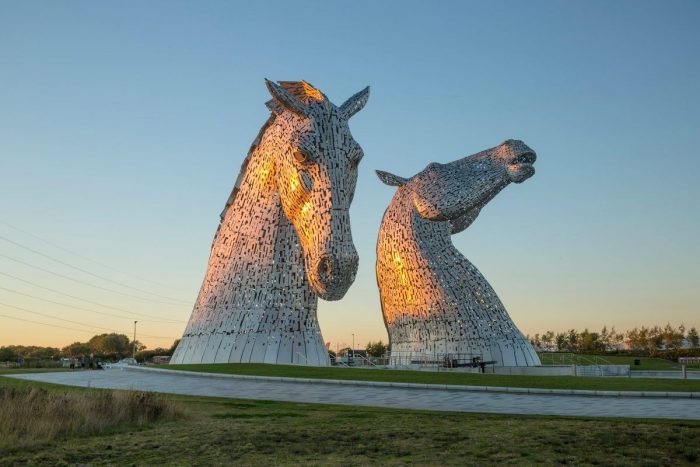More than their mostly recreational role now, horses had a more pivotal role in history, from plowing fields to transporting man. This is especially so in Falkirk, Scotland. The Kelpies by public artist Andy Scott, after almost eight years of development, are in their last stages of construction. Horses have literally shaped the landscape these Kelpies now reside on. The two gigantic horse heads, modeled after two Clydesdales from Glasgow City, stand to glorify the role of horses in the Scottish landscape as well as to become an icon for the Falkirk area.
From Andy Scott: ‘Completed at the end of October after almost 8 years of planning, and one-year fabrication and assembly, The Kelpies now reach into the skies above Falkirk & Grangemouth in central Scotland. They are the largest works of art in Scotland and the largest equine sculptures in the world. Equitecture.’
The word kelpie refers to the mythical water horse of Scottish folklore that has the strength of 10 horses. Besides being an icon of Scottish heritage, they are also a symbol of the area’s evolution. Evolution from horse to kelpie is analogous to the evolution of Falkirk into the town it is today.
These gigantic steel structures with their structural steel cladding stand very visibly in the land around it, above the Forth and Clyde Canal. The choice in structural assembly makes them hallow and occupyable, hence the term equitecture that the artist used.
They remind me of how the Statue of Liberty is categorized as both sculpture and architecture. Much like the Statue of Liberty, the Kelpies are meant to be the icon for Falkirk, because of their architectural scale. They will be open to the public to occupy this Spring.
By Aiysha Alsane
